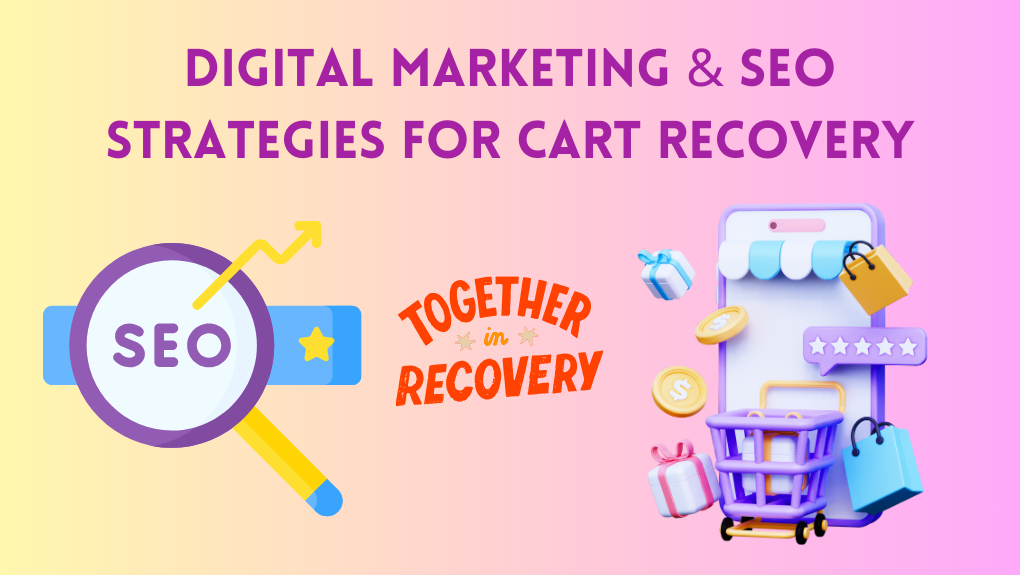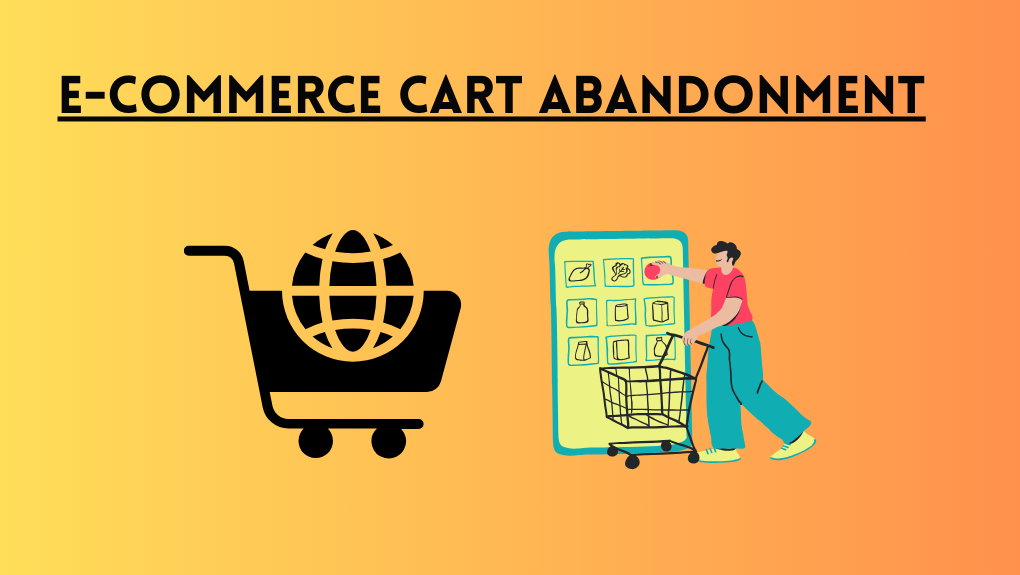E-commerce Cart Abandonment: Strategies to Counter Potential Loss and Boost Conversion
Most of us shop online these days, but as a culture accustomed to the luxury of window shopping and cruising the mall for the best deals, many online shopping carts are abandoned before purchase.
In fact, almost 70% of shoppers abandon their carts, which isn’t a problem for the shopper but a persistent challenge for those running e-commerce ventures.
It costs billions in potential revenue, so understanding why shoppers fill their carts and vanish without a trace is really important.
The insight can help you turn the situation around with effective strategies that bring them back to your store to reconsider.
If you are successful at combating shopping cart abandonment, then you stand to make some great profits.
So let's look at the topic in detail and explore some effective ways to reduce abandonment and boost conversion rates instead.
a) Reasons Behind Cart Abandonment

Before we can strategize to prevent cart abandonment, the reasons behind it must be understood.
There are multiple factors throughout the checkout process that play a part. By recognizing them, recovery tactics can be put in place; here’s a quick overview:
i. Common Cart Abandonment Causes
• Unexpected shipping fees or taxes that put shoppers off at the last minute.
• The checkout process is overly complicated and has too many steps.
• Users are required to create an account and verify it using their email.
• The safety of the site seems dubious, and there are security concerns regarding entering payment information.
• Abandoning the cart to assess prices elsewhere or to wait for discounts.
These are the principal causes; with the causes understood, we can look at how to mitigate the issues one by one.
b) Optimizing e-Commerce Checkout
You have to remember that online shoppers are often impatient, having opted to shop online for convenience and speed, so it is important that the checkout process is quick and easy.
Every click and every form is a potential point of abandonment, so streamline everything as much as possible for the best conversion.
i. Forms and Payments
One simple way to reduce abandonment significantly is to keep forms short with autofill functions and offer a wide variety of payment options. If the checkout process is easy and shoppers have a smooth experience, they are more likely to follow through with their purchases.
• Reduce your information requirements down to the essentials.
• Consider convenient payment options such as PayPal and other digital methods like Apple Pay.
• Make account creation optional, allowing shoppers to checkout as guests.
ii. Site Optimization
The site itself needs to function seamlessly; page load speeds are another big reason for abandonment.
Leverage caching and optimize images to make sure they load quickly. Use a CDN (content delivery network) to make sure no technical issues are putting off your potential customers.
c) Keep Pricing Transparent
Unexpected extras at the point of checkout are responsible for nearly half of shoppers (48%) shoppers abandoning their carts.
Making sure that shipping and taxes are displayed from the get-go is the best way to combat this one head-on.
i. Display a Breakdown of Total Costs
No one wants to be shocked by a nasty surprise at the checkout; it can make a customer feel cheated, so be transparent from the start.
A transparent approach to your pricing builds brand trust and converts shoppers to loyal customers. Display a cost breakdown while customers browse so that they have a clear picture upfront.
ii. Shipping Strategies
If possible, offer free shipping. People shopping online often have in mind that the price of the item will come with a shipping fee; waiving the fee is a nice surprise that motivates them to purchase.
If you can’t offer it for free, then look at providing some sort of discount, whether it is for multiple items or repeat customers. It increases customer satisfaction and is another great way to boost conversion and prevent abandonment.
d) Cart Abandonment Contact
Another of the best recovery tools is a personalized email sent at the right time to remind customers of their cart items.
i. Tone and Timing
Personalizing the email to the customer is a great idea, and the timing is crucial. Sending a reminder an hour after abandonment works well, and a follow-up email the following day doesn’t go amiss either. Here are some tips:
• Personalize it with additional items or related accessories they might like to add rather than saying, Hey, you forgot to buy the following.
• Offer them a discount as an incentive, and advise them that the prices of the items in their cart have been reduced slightly.
• Create a sense of urgency by letting them know some of their items are in limited stock to prompt them to act now.
A friendly, well-timed reminder can work well to nudge the customer to complete a purchase.
e) Retargeting With On-Site Tools
Recapturing the customer's interest before they leave your site is another preventative strategy for cart abandonment recovery.
i. Exit-Intent Technology
Implement targeted messages and pop-ups asking them if they are sure they want to leave before they purchase. With exit-intent technology, you can track mouse movements, which helps to detect loss of interest and when a user is about to leave the site.
• Try offering a discount code to shoppers who are about to disappear.
• Offer live customer support so customers can raise questions.
• Try a friendly pop-up to remind customers of their current cart items with a head-to-checkout prompt.
Sometimes, a last-minute reminder when a shopper is ready to abandon ship can make all the difference.
f) Digital Marketing & SEO Strategies for Cart Recovery

Leveraging digital marketing and SEO can significantly reduce cart abandonment while improving overall conversions.
A well-optimized strategy ensures your store ranks higher in search engines, attracts the right audience, and retains customers.
i. SEO & Search Visibility
Optimizing product pages with targeted keywords, structured data, and high-quality content improves search rankings, making it easier for potential buyers to find your store. Use schema markup for product listings, ensuring rich snippets like reviews, pricing, and stock availability appear in search results.
ii. Retargeting & Email Marketing
Using Google Ads, Facebook Pixel, and email retargeting campaigns, you can remind potential buyers about their abandoned carts. Personalized email sequences with time-sensitive discounts or recommendations increase the chances of cart recovery.
iii. Social Media & Influencer Impact
Promoting limited-time offers through Instagram, TikTok, and Pinterest ads can create a sense of urgency. Collaborating with influencers for product recommendations and unboxing videos helps build credibility and trust, reducing hesitation at checkout.
By integrating SEO, targeted ads, and retargeting, you can bring back potential buyers, reduce cart abandonment, and boost conversions effectively.
g) Trust Signals To Implement
To help mitigate a lack of trust in site security, secure payment logos and customer reviews really help. Also, be sure to have a detailed return policy to relax the customer and ease their concerns before they give away payment information.
i. SSL Certificates & Trust Badges
You can reassure your shoppers with secure-payment digital badges, letting them know their transactions are safe. Display customer testimonials such as below.
• Display security badges.
• Highlight positive reviews on the product pages.
• Make sure your return and refund are easy to find and clearly written to reduce hesitation.
To let customers know you are as concerned about security as they are, you might suggest they use a VPN for added protection (learn more information here).
h) Social Proof & Urgency
Sometimes shoppers need reassurance; you can encourage them that they are making wise decisions by using social proof and urgency tactics.
i. Popularity & Scarcity Tactics
People don’t like to miss out, and they also want what other people are buying. Pop-ups such as "X people currently viewing this" make them feel like they have good taste, and "Only Y items left" can help drive the hesitant to purchase through the sense of urgency. Here are some things to try:
• Display discount timers and flash sale countdowns.
• Add real-time customer activity notifications to let them know who else is browsing the same item.
Though subtle, these can be effective psychological triggers that encourage prompt action.
i) Optimise Backend Operations
Deploy an automation platform to manage your backend marketplace operations to streamline catalog management, order management, shipping workflows, payments automation, and returns management, ensuring that your customers have the best possible experience when they first visit your website and prevent them from abandoning the cart.
Conclusion
Cart abandonment is one of the biggest issues faced in e-commerce, but it can be effectively reduced by implementing the strategies we discussed.
If you implement the above well, you can transform potential abandoners into sales opportunities.
Remember to keep it convenient; that is e-commerce's biggest advantage. Simplify the checkout process, make account creation optional, and use on-site strategies such as discounts, social proof, pop-ups, and real-time notifications.
If they do abandon the products, send a friendly email or two.
With the right strategies in place, losses can be prevented, conversion rates can soar, and you can build brand trust and the loyalty needed for long-term success.







